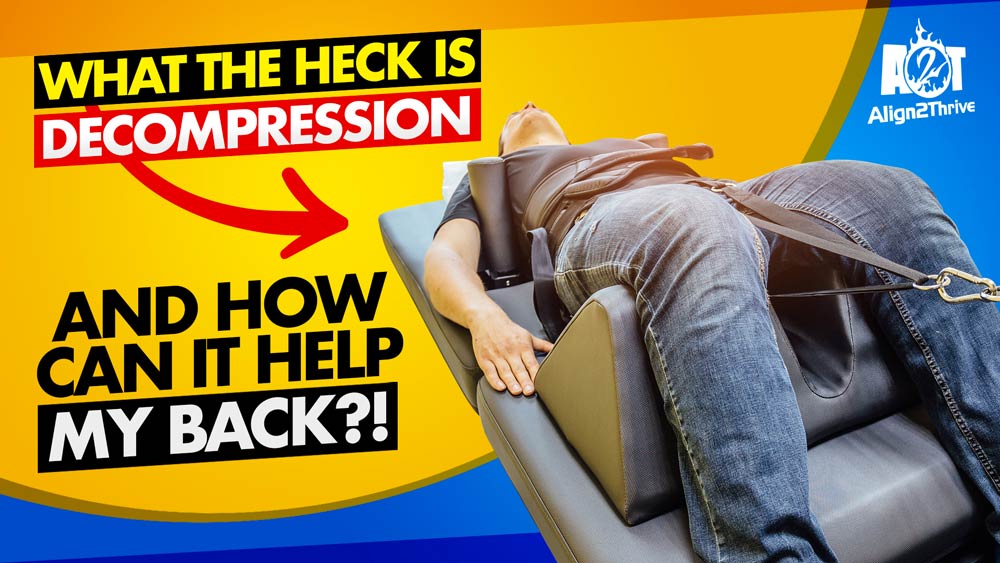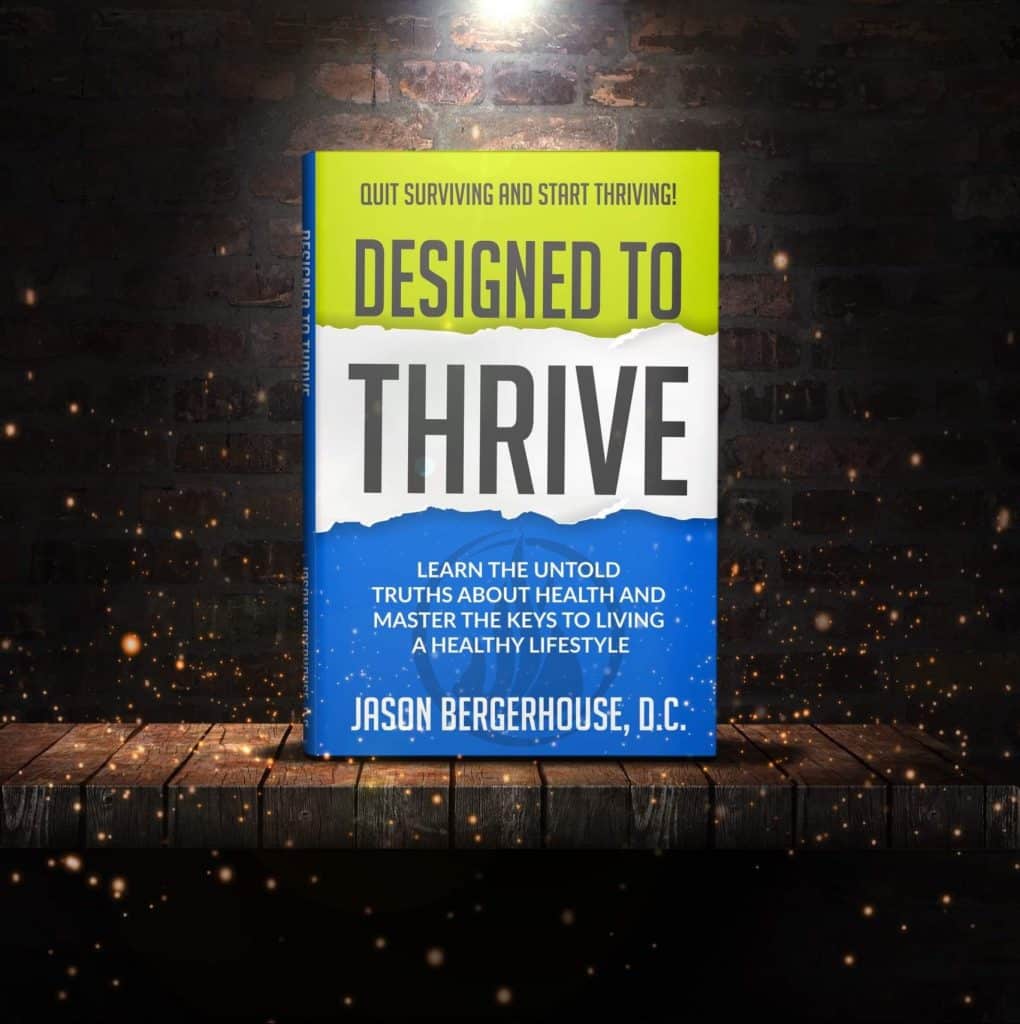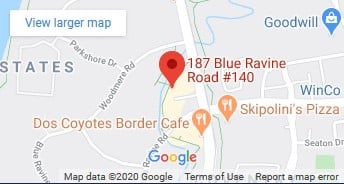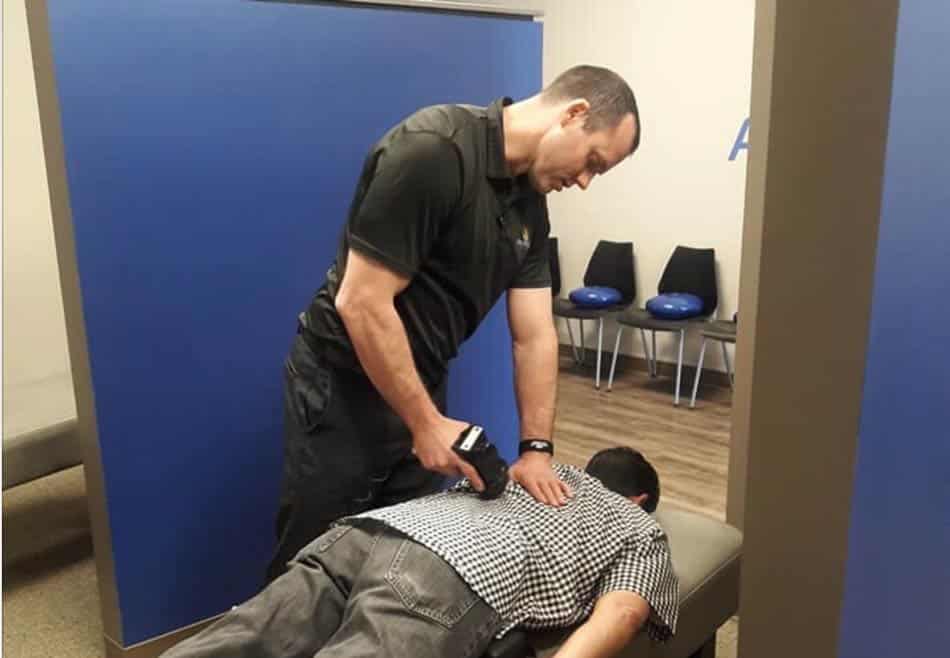In this video Dr. Jay describes how decompression can help you combat acute and chronic Lower Back Pain.
In our office we have successfully treated many cases of Chronic and Acute Lower Back Pain with disc involvement. The way decompression work is it tractions the back along the “Z” axis and works to retract the discs back into a more normal position. This works to take pressure off of the disc and nerve, decrease inflammation, and help a person not only to feel better but function better as well.
At Thrive Spine Center, we use decompression in conjunction with Chiropractic care to help heal our patients. The Results speak for themselves.
Understanding Back Pain
Types of Back Pain
Back pain is not a one-size-fits-all condition. It can manifest in various forms, each with its own characteristics and causes. Understanding the different types of back pain is crucial in evaluating the potential efficacy of spinal decompression therapy.
- Acute vs. Chronic: Back pain can be categorized as either acute, which is sudden and short-term, or chronic, persisting for weeks or even months.
- Mechanical vs. Structural: While mechanical back pain is often related to movement and posture, structural issues like herniated discs and spinal stenosis result from physical changes in the spine.
Common Causes of Back Pain
Several factors contribute to back pain, including:
- Herniated Discs: When the soft inner material of a spinal disc protrudes, it can press on nerves, causing pain.
- Spinal Stenosis: Narrowing of the spinal canal can compress spinal nerve roots, leading to discomfort.
- Degenerative Disc Disease: Age-related wear and tear on spinal discs can cause pain and reduced mobility.
- Sciatica: Irritation of the sciatic nerve often leads to sharp, radiating pain down the leg.
Understanding the specific cause of your pain is essential in determining the most appropriate treatment.
What is Spinal Decompression Therapy and Does It Really Work?
Spinal decompression therapy is a non-surgical treatment aimed at reducing back pain by addressing issues related to spinal compression. It typically involves the use of specialized equipment to stretch and decompress the spine gently.
Types of Decompression Therapy
- Spinal Decompression Therapy: This form of treatment is performed using a motorized traction table, where controlled forces are applied to the spine to alleviate pressure.
- Inversion Therapy: Inversion tables allow patients to hang upside down, reducing gravitational pressure on the spine.
- Manual Traction: In some cases, a healthcare professional may perform manual traction, gently pulling the patient’s body to decompress the spine.
The Science Behind Decompression
Spinal decompression therapy aims to reduce back pain through several mechanisms:
- Reducing Spinal Pressure: By creating space between spinal discs, pressure on nerves is relieved, potentially reducing pain.
- Promoting Nutrient and Fluid Exchange: Decompression can encourage the flow of nutrients and fluids to damaged discs, aiding in the healing process.
- Stimulating the Body’s Natural Healing Mechanisms: This therapy may trigger the release of endorphins and promote the body’s innate ability to heal.
Clinical Studies and Research Findings
Clinical research has explored the effectiveness of spinal decompression therapy in various conditions. Some studies suggest that it can provide relief for certain patients with chronic back pain. However, it’s important to note that results can vary from person to person.
Pros and Cons of Decompression Therapy
Advantages
- Non-invasive Nature: Spinal decompression therapy is non-surgical, making it an attractive option for those looking to avoid invasive procedures.
- Potential for Pain Relief: Some patients report experiencing pain relief after completing a spinal decompression therapy program.
- Limited Side Effects: Compared to surgery, decompression therapy typically has fewer associated risks and side effects.
Limitations and Risks
- Not a One-Size-Fits-All Solution: Decompression therapy may not be effective for everyone, and its success often depends on the underlying cause of back pain.
- Lack of Long-Term Studies: Long-term outcomes of decompression therapy are still being studied, and more research is needed to establish its lasting benefits.
- Cost Considerations: The cost of decompression therapy can be a factor, as it may not be covered by all insurance plans.
- Availability and Accessibility: Access to decompression therapy may be limited in some areas, making it inaccessible to certain individuals.
Alternative Treatments for Back Pain
While decompression therapy is one option, there are several other treatments to consider:
- Physical Therapy and Exercise: Targeted exercises and physical therapy can help strengthen the back and improve mobility.
- Medications and Pain Management: Medications, such as anti-inflammatories or muscle relaxants, can provide relief for some patients.
- Surgery as a Last Resort: In severe cases, surgical intervention may be necessary to address the underlying cause of back pain.
- Lifestyle Modifications: Simple lifestyle changes, like improving posture or maintaining a healthy weight, can also contribute to pain management.
The Role of Pain Management in Back Pain
When it comes to managing back pain, pain relief is often a top priority. While non-surgical spinal decompression therapy is one option, it’s essential to explore the broader landscape of pain management strategies that can complement or work in conjunction with this treatment.
Medications
Medications can play a crucial role in alleviating back pain, particularly when it comes to managing symptoms such as chronic pain, inflammation, or muscle spasms. Some key points to consider include:
- Prescription Pain Medications: In cases of severe pain, healthcare providers may prescribe stronger pain relievers, such as opioids. It’s important to use these medications under close medical supervision due to the risk of dependence.
- Non-Steroidal Anti-Inflammatory Drugs (NSAIDs): NSAIDs like ibuprofen can help reduce pain and inflammation associated with back pain.
- Muscle Relaxants: Muscle relaxants may be prescribed to relieve muscle spasms that contribute to back pain.
Injections
Injections are another avenue for pain management, particularly for those with chronic low back pain. Common types of injections include:
- Epidural Steroid Injections: These injections deliver steroids directly to the area around the spinal cord and nerves to reduce inflammation and alleviate pain.
- Facet Joint Injections: Facet joints in the spine can be a source of pain, and injections into these joints can provide relief.
- Trigger Point Injections: For pain caused by specific muscle knots or trigger points, injections can help relax and relieve tension.
Other Pain Relief Strategies
In addition to medications and injections, several other pain management techniques may be considered alongside or after non-surgical spinal decompression therapy:
- Physical Therapy: Physical therapists can design exercise and stretching routines tailored to your condition to improve flexibility, strength, and posture.
- Heat and Cold Therapy: Applying heat or cold packs can provide temporary relief from pain and reduce inflammation.
- Acupuncture: This ancient practice involves the insertion of thin needles into specific points on the body and is believed to help alleviate pain.
- Chiropractic Care: Chiropractors focus on spinal adjustments and manual manipulation to improve spinal alignment and reduce pain.
- Mind-Body Techniques: Practices like yoga, meditation, and mindfulness can help manage chronic pain by reducing stress and promoting relaxation.
Lifestyle Changes and Back Pain Prevention
Prevention is often the best medicine when it comes to back pain. Making lifestyle changes and adopting healthy habits can significantly reduce the risk of developing chronic low back pain and other related conditions. Here are some tips for preventing back pain:
Maintaining Proper Posture
- At Work: Ensure your workspace is ergonomically designed to support good posture. Use an adjustable chair, maintain a neutral spine position, and take breaks to stretch and move.
- At Home: When sitting or standing, be mindful of your posture. Use supportive chairs and avoid hunching or slouching.
Regular Exercise
- Strengthening Core Muscles: Engage in exercises that target your core muscles, as a strong core can provide better spinal support.
- Cardiovascular Fitness: Aerobic exercises like walking, swimming, or cycling can improve circulation and promote overall spinal health.
Ergonomic Workspaces
- Adjust Your Workspace: Whether at home or in the office, make sure your workstation is set up to promote good posture. Use an ergonomic chair, position your computer screen at eye level, and keep your keyboard and mouse within easy reach.
Healthy Habits
- Maintain a Healthy Weight: Extra weight, especially around the midsection, can strain the lower back. Maintaining a healthy weight can reduce the risk of developing chronic low back pain.
- Stay Hydrated: Proper hydration is essential for the health of your spinal discs, which act as shock absorbers for the spine.
- Quit Smoking: Smoking can reduce blood flow to the spine and inhibit the body’s ability to heal, potentially increasing the risk of back pain.
Questions to Ask Before Trying Decompression Therapy
Before embarking on a non-surgical spinal decompression therapy program, it’s essential to ask the right questions and gather the information needed to make an informed decision. Here are some key questions to consider:
- Am I a Candidate for Spinal Decompression Therapy? Not everyone with back pain is a suitable candidate for this treatment. Your healthcare provider can assess whether it’s a viable option for you.
- What Type of Therapy Is Best for My Condition? Understand the specific type of spinal decompression therapy recommended for your condition, whether it’s motorized traction, inversion therapy, or manual traction.
- What Are the Potential Risks and Side Effects? Like any medical procedure, spinal decompression therapy carries some risks. Discuss these with your healthcare provider.
- How Many Sessions Will I Need? The number of sessions required can vary based on your condition. Clarify the expected duration of your treatment plan.
- What Is the Expected Outcome? Discuss realistic expectations for pain relief and improvements in your condition. It’s important to have a clear understanding of what this therapy can achieve.
- Are There Any Lifestyle Changes I Should Make Alongside the Therapy? Your healthcare provider may recommend specific lifestyle modifications or complementary therapies to enhance the effectiveness of decompression therapy.
FAQ (Frequently Asked Questions)
Here are answers to some common questions about spinal decompression therapy and its role in treating back pain:
What is Spinal Decompression Treatment, and How Does It Work?
Spinal decompression therapy is a non-surgical effective treatment option designed to relieve pain in the neck and back by gently stretching the spine. This therapy aims to create space between spinal discs, which can help alleviate pressure on the spinal joints and reduce pain. It can be performed using specialized equipment such as a decompression table, motorized traction devices, or inversion tables.
Is Spinal Decompression Therapy Effective for Neck Pain?
Yes, spinal decompression therapy can be effective for neck pain in some cases. It works by addressing the underlying issues contributing to neck pain, such as herniated discs or spinal compression. However, its effectiveness may vary depending on the specific cause of the pain and the individual’s condition.
What Conditions Can Spinal Decompression Therapy Treat?
Spinal decompression therapy is often considered for conditions such as herniated discs, spinal stenosis, and chronic low back pain. It may also provide relief for individuals experiencing sciatica and back pain related to spinal compression. However, it’s essential to consult with a healthcare provider to determine whether this form of therapy is suitable for your specific condition.
How Long Does It Take to Experience Relief with Spinal Decompression Therapy?
The timeline for experiencing relief through spinal decompression therapy can vary from person to person. Some individuals report pain relief within the first few sessions, while others may require a more extended treatment plan. Improvement in pain is often gradual and may continue even after completing the therapy. Discuss the expected timeframe with your healthcare provider as part of your treatment plan.
What Are the Benefits of Spinal Decompression Therapy Over Surgical Options?
Spinal decompression therapy offers several advantages over surgical spinal decompression. It is a non-surgical and non-invasive form of therapy, which means there is no need for incisions or the associated risks of surgery. Additionally, it typically has fewer side effects and a shorter recovery period. However, the suitability of this therapy depends on your specific condition
LINKS: Facebook: https://www.facebook.com/groups/Align2Thrive/




